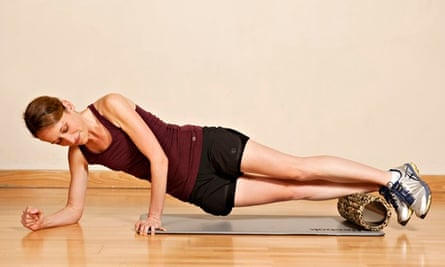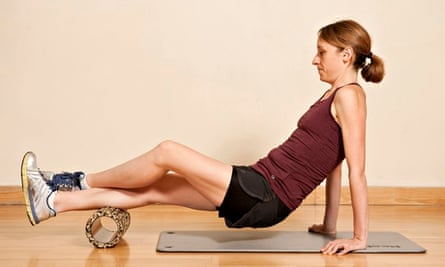Most runners will have at least heard of the foam roller, or encountered it in a gym. But many of us – myself included – are a little clueless when it comes to actually using it. The same applies to other things beneficial to running, that don't actually involve running itself – such as dynamic stretching, core work and exercises to target and strengthen the knee.
We'll look at these areas later on in these series of workouts to target everything-but-the-running. But let's start with learning the basics of the foam roller.
Why use them at all?
Foam rollers, when used correctly, can release tension and tightness between the muscles and the fascia (which surrounds the muscle or group of muscles). This tension or tightness is usually caused by repetitive moving patterns - so obviously running, but also resistance training or other repetitive sports/actions. Foam rolling as well as dynamic stretching can help improve flexibility and range of movement, and decrease the risk of injury.
The point with foam rolling is to use your body weight – so if an area really hurts, go gentle on it and support some of your weight elsewhere, using your arms. You can add more "weight" as the muscle relaxes. In other words work to your own pain threshold!
Does it work for every sore or tight muscle?
Well, not necessarily. David Oladogba, a personal trainer at Virgin Active is devising these sessions for me. And he is not a proponent of stretching the ITB – the ilotibial band – on the foam roller. Indeed he's not alone, as this blog shows. He says that stretching is better for this area – and another blog, Breakingmuscle.com concurs and actually suggests it can be counter-productive. But many people – physios and runners amongst them – swear by it so it seems to be a divisive issue in the foam rolling world ...
Does it hurt?
Um, I'd be lying if I said no. Sorry. But it's short term pain for happier muscles and better running and recovery.
The muscles to target

1. Tibialis Anterior
The outside part of your lower leg (frequently associated with shin splints). These are the muscles that pull the toes up – "dorsiflexion" – and are therefore used when walking or running as the foot or ankle is flexed. These muscles also stablise the ankle. Start at the top (near the knee) and work down then up again. Some people do this in more of a kneeling position but as with all foam rolling stretches, you might need to adjust to target the muscle (and not fall over in the process).

2. Calf muscle: soleus

Essentially the soleus is the big muscle in the middle of the calf, the gastrocnemius the lateral muscle, i.e .the one that runs slightly up the side of the calf. So to foam roll both you need to do one pretty much 'straight' on the roller and one when you rotate the calf ever so slightly to the side, as below.
3. Calf muscle: gastrocnemius
As above, but slightly inclined inwards so that you are targeting the inner part of the calf.

4. Vastus medialis
The vastus medialis is the inner muscle of the front of your thigh. So basically the best way to target this is to do something akin to a plank on a foam roller (thought this was going to be fun? I do hope not). You can rotate ever so slightly until you feel where the muscle really needs work.

5. Vastus lateralis
This is the large muscle on the side of the thigh. Well, vastus is Latin for "vast" after all and as you are all runners, it's bound to be well developed, right? So it's slightly more like foam rolling in a side plank. Sorry.

6. Gluteus
The poor glutes do a lot of work - or they should - when running. And don't get much of the credit for it. Treat them to some foam rolling. You'll see the picture above looks quite similar at first glance to vastus lateralis but the body is rotated up more, so you are really getting into the bottom area.
Coming up in this series
As mentioned above, we'll be looking at dynamic stretching, core work and exercises to target and strengthen the knee. But if you have any particular requests, exercises you've never mastered, or particular muscle groups you want to target, please do let me know below the line, and I'll get David to devise some special torture for you.
Kate Carter is running the Virgin Money London Marathon and training at Virgin Active

Comments (…)
Sign in or create your Guardian account to join the discussion